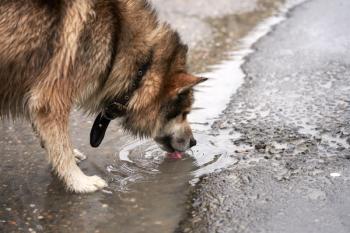
Social Behavior in Chimps Improves Gut Microbe Diversity
Chimpanzees that socialize more have a greater diversity of bacteria in their gut.
A study published in
The gut microbiota is a diverse community of microorganisms that is now known to play beneficial roles in the animal—protecting against infection and metabolizing nutrients, for example. Collectively, the genes carried by these microorganisms are known as the gut microbiome.
Although it is commonly known that pathogenic microorganisms can be transmitted between animals via social interactions, the extent to which beneficial microorganisms are transmitted in this way remains poorly understood.
Andrew H. Moeller, PhD, University of Texas at Austin, and colleagues therefore conducted a multi-institutional study to evaluate the effects of social behavior in chimps on their gut microbial communities and on bacterial diversity both within and between different generations of chimps.
In this study, the researchers monitored changes in gut microbes and changes in the social behavior of a community of 40 wild chimpanzees in Gombe National Park, Tanzania, between 2000 and 2008. Animals were subjected to all-day observation, and their interactions with other chimps and food consumption were monitored continuously. The animals ranged in age from infants (0-5 years) to elderly chimps (>35 years).
Throughout the course of the study, the chimps displayed consistent seasonal changes in social behavior, allowing the researchers to measure the influence of social interactions on the animals’ gut microbiomes. According to the authors, “during dry seasons, chimpanzees spend substantially more time alone or in small groups, whereas during wet seasons, chimpanzees forage together in larger groups.” Indeed, they found that the chimps’ sociability was significantly higher each year during wet seasons (November through April) than dry seasons (May through October).
The researchers also collected 96 samples of droppings from the chimps throughout wet and dry seasons, and analyzed the bacterial DNA content in the samples. They discovered that chimps harbored a wider variety of bacterial species during the wet season when they were more social, although no particular type of bacteria predominated during this time. However, this bacterial diversity could not be accounted for by seasonal food changes alone—social interactions between the chimps clearly played an important role too. The researchers also found that the bacterial composition of individual chimps was as similar between unrelated animals as it was between related animals.
The results of this study therefore improve scientists’ understanding of the factors that help maintain a healthy microbiome. The composition of the gut microbiome of each primate species—including humans—is unique and reflects the ecology and evolution of each particular species. Although animals initially inherit the first dose of their gut microbial community from their mother, these study results suggest that, throughout life, animals obtain most of their gut bacteria through social interactions. This mechanism of social inheritance may be essential to create microbial diversity over time, because it will prevent extinctions of bacteria that tend to occur when microbes are transmitted only from parent to offspring.
“Our results suggest that changes in the human pan-microbiome occurring today as a result of modern lifestyles could be inherited by future generations,” the authors conclude.
Newsletter
From exam room tips to practice management insights, get trusted veterinary news delivered straight to your inbox—subscribe to dvm360.




